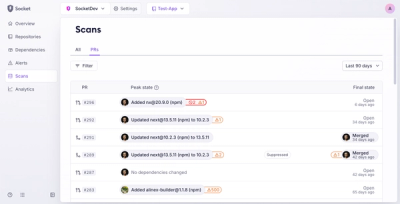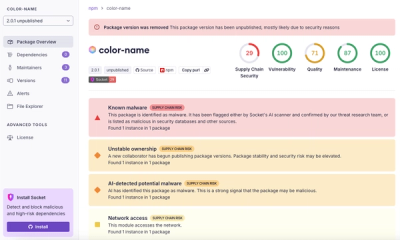
Security News
MCP Steering Committee Launches Official MCP Registry in Preview
The MCP Steering Committee has launched the official MCP Registry in preview, a central hub for discovering and publishing MCP servers.
rapido-raptorjs
Advanced tools
Scaffolding allows for applications to be built very quickly since it can be used to remove many of the tedious steps required to build complex applications. RaptorJS provides design patterns for building client/server JavaScript modules, UI components and webapps that are a strong fit for scaffolding solutions. For that reason, code to support scaffolding has been added to RaptorJS (view source). The usage is described below.
Scaffolding is now supported using the Rápido command line interface and the Rápido stack for RaptorJS
sudo npm install rapido --global
sudo npm install rapido-raptorjs --global
To enable the raptorjs stack for a project, you will need to run the following command:
rap use raptorjs
cd websites
mkdir my-static-web
cd my-static-web
rap create webapp --static
npm install
node build.js
cd websites
mkdir my-server-web
cd my-server-web
rap create webapp
npm install
node server.js
rap create component ui/buttons/SimpleButton
rap create page test
rap remame component ui/buttons/SimpleButton ui/buttons/SimpleButtonRenamed
NOTE: All references to the old UI component should be updated.
rap clone component ui/buttons/SimpleButton ui/buttons/SimpleButtonCloned
rap create module test/my-awesome-module
The Rápido stack for RaptorJS supports the following configuration options (defined in rapido.json):
{
"scaffold.component.dir": "scaffolds/component",
"scaffold.page.dir": "scaffolds/page",
"scaffold.webapp.dir": "scaffolds/webapp",
"modules.dir": "modules",
"components.base.dir": "modules",
"pages.base.dir": "modules/pages",
"app.rtld.file": "modules/taglibs/app/app.rtld"
}
FAQs
Rapido stack for the RaptorJS Toolkit
We found that rapido-raptorjs demonstrated a not healthy version release cadence and project activity because the last version was released a year ago. It has 4 open source maintainers collaborating on the project.
Did you know?

Socket for GitHub automatically highlights issues in each pull request and monitors the health of all your open source dependencies. Discover the contents of your packages and block harmful activity before you install or update your dependencies.

Security News
The MCP Steering Committee has launched the official MCP Registry in preview, a central hub for discovering and publishing MCP servers.

Product
Socket’s new Pull Request Stories give security teams clear visibility into dependency risks and outcomes across scanned pull requests.

Research
/Security News
npm author Qix’s account was compromised, with malicious versions of popular packages like chalk-template, color-convert, and strip-ansi published.